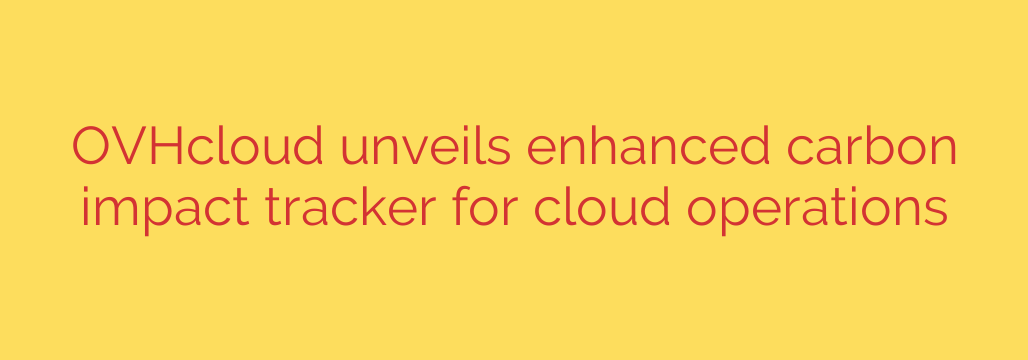
Understanding and Reducing Your Cloud Carbon Footprint: New Tracking Capabilities
As businesses increasingly migrate operations to the cloud, the environmental impact of these digital infrastructures is becoming a critical focus. While cloud computing offers significant efficiencies compared to on-premises data centers, it still consumes vast amounts of energy. Understanding and managing this consumption, and the associated carbon emissions, is essential for achieving corporate sustainability goals.
Measuring the precise carbon footprint of cloud usage has traditionally been challenging due to the shared nature of the infrastructure and the complexity of attributing energy use to specific workloads. However, advancements in tracking technology are providing unprecedented visibility, empowering organizations to make more informed, environmentally conscious decisions.
Leading cloud providers are now rolling out enhanced tools designed to give customers a clear picture of their environmental impact. These sophisticated carbon impact trackers are a significant step forward in making digital operations more sustainable.
What These New Tools Offer
These enhanced tracking capabilities provide a level of detail and granularity previously unavailable. Key features typically include:
- Detailed Reporting: Break down your estimated carbon emissions by service, region, and even individual resource usage. This allows you to see which parts of your cloud infrastructure have the biggest environmental footprint.
- Granular Visibility: Understand the specific impact of different virtual machines, storage types, or database services. This insight is crucial for targeted optimization efforts.
- Historical Data & Trends: Track your emissions over time to monitor progress towards sustainability goals and identify trends in your usage patterns.
- Support for Reporting: Generate data that can be used for internal sustainability reports, ESG (Environmental, Social, and Governance) disclosures, and compliance requirements.
Turning Insight into Action
Having access to this detailed data is the first step. The real value lies in using these insights to implement changes that reduce your environmental footprint. Armed with information from an enhanced carbon tracker, you can take practical steps such as:
- Optimizing Your Workloads: Identify and shut down idle or underutilized resources. Right-sizing your instances to match actual demand is a powerful way to reduce waste and emissions.
- Choosing Efficient Services: Compare the environmental impact of different service types or configurations offered by your provider and opt for those known for better energy efficiency where feasible.
- Considering Data Center Locations: Some data center regions rely more heavily on renewable energy sources than others. If your application architecture allows, strategically choosing regions can significantly lower your footprint.
- Implementing Automation: Use automation to scale resources up and down based on real-time demand, ensuring you’re only using what you need when you need it.
A Greener Future for the Cloud
Enhanced carbon impact tracking tools are a vital development in the journey towards truly sustainable cloud computing. They provide the transparency needed for businesses to not only understand their environmental impact but also to actively manage and reduce it. By leveraging these new capabilities, organizations can contribute to a greener digital future while often simultaneously improving efficiency and reducing costs.
As sustainability becomes increasingly central to business strategy, expect these types of environmental monitoring tools to become standard offerings, playing a crucial role in how organizations design, deploy, and manage their cloud infrastructure.
Source: https://datacenternews.asia/story/ovhcloud-launches-updated-carbon-impact-tracker-for-cloud-operations








